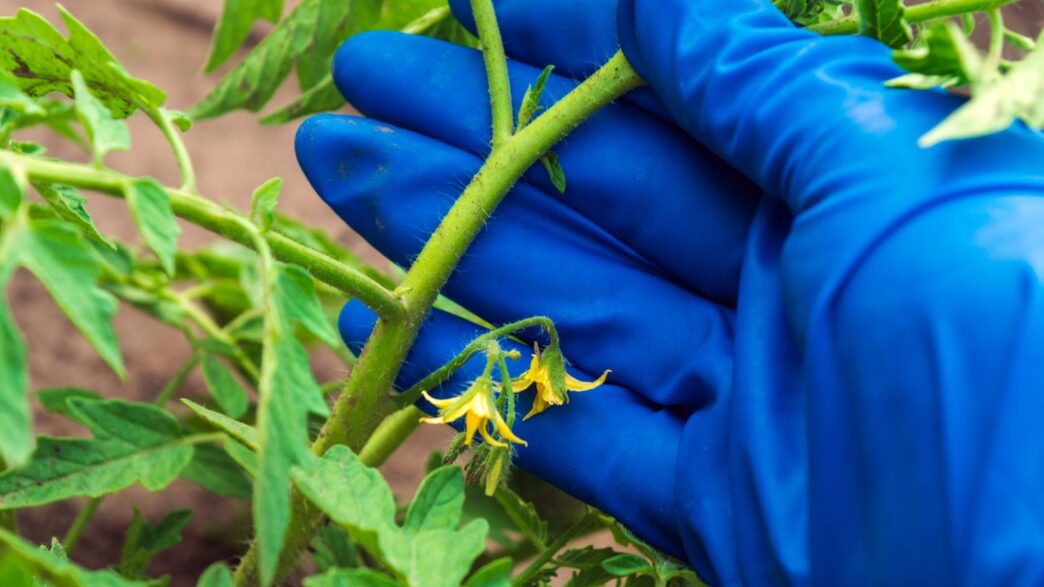Let’s face it – Successful farming consists of many components! These include practical and environmentally friendly risks control. Crop diseases and their management should be a priority for those who want to get high yields.
Sustainable protection methods have several advantages. An opportunity to grow high-quality, nutritious food is one of them.
The absence or reduction of the use of chemicals also reduces the negative impact on nature. In the context of climate change and the growing need for food products, the search for alternative control methods is more relevant than ever.
Eliminating pesticides will also preserve soil for future generations and prevent pollution of water sources.
What Causes Plant Diseases?
Farmers should learn to recognize symptoms and learn some reasons behind various crop diseases. This knowledge can help to manage risks and prevent severe damage.
Symptoms include
- leaf spots
- fruit defects
- wilting
- deformed growth
- untypical coloration
Living factors, including fungi, viruses and bacteria, and non-living factors, including lack of essential nutrients, can cause various crop problems.
Diseases arise where three conditions coincide: decreased plant immunity, the infections/pathogen causative agent, and an environment suitable for developing the pathogen. However, eliminating one of the three can help to prevent and control the crop loss due to disease.
Biological Control Methods
It has become one of the most sought after in recent years as the cases of diseases increase. In addition, our understanding of how infection spreads has improved, making it easier to take action to prevent them.
Biocontrol may involve the implementation of natural predators, useful insects that can eat aphids that spread viral diseases.
This practice also includes the application of natural or synthetic chemicals to disrupt the life cycle of pests and pathogens, preventing them from developing and weakening the plant.
Biocontrol products can become a reliable alternative to pesticides and also work as antioxidants, removing harmful toxins and free radicals that can damage plants.
Cultural Practices
Strategic cultural practices include a range of measures to prevent or reduce plant infection. These include such ancient practices as crop rotation.
By planting the same crop year after year, farmers allow pathogens and weeds to thrive by feeding in the same place. Changing plants is a reliable way to disrupt the life cycle of a pathogen.
Proper spacing of plants is also an option, as this practice reduces the risk of fungal infections.
Agritechnical practices can improve crop resistance or resistance to pests and infections. The list also includes planting certified or sustainable seeds.
It is also vital to avoid over- or under-irrigation, as both leave farmers with weakened and strong pathogens.
Resistant Plant Varieties
Breeding and selecting resistant genetically engineered crop varieties is a long-term eco-friendly solution. These varieties are genetically immune to diseases and can help to reduce dependence on chemical treatments, providing natural protection against pathogens.
Certain seeds show varying levels of resistance to certain infections. Cultivars with high resistance can limit the growth and multiplication of the pathogen on or within the crop, meaning they may show little or no disease symptoms.
They can also have an intermediate resistance level and exhibit symptoms but at a much lower level than susceptible cultivars.
Organic and Natural Pesticides
Another alternative method of pest control is organic and natural pesticides. These are various oil-based products, diatomaceous earth and Bacillus thuringiensis. Neem oil, for instance, works as a natural insect repellent.
Biopesticides are also obtained from various types of plants, bacteria and minerals. They are effective against multiple threats but are safe for the environment, beneficial organisms and humans.
Soil Health Management
Healthy ground is the key to high yields. Eco-friendly practices improve soil properties by increasing organic matter and providing a habitat for microorganisms. Reduced tillage, intercropping, and agroforestry improve structure and reduce erosion over time.
Proper soil care is also a crucial factor for crop protection and disease control. Healthy soils are essential in promoting a thriving ecosystem that benefits plants and the environment.
In favorable conditions, a diverse range of soil organisms lives, which helps control plant infections, insects, and weeds.
These organisms also form beneficial symbiotic associations with plant roots, recycle essential plant nutrients, and improve soil structure, enhancing soil water and nutrient retention capacity.
Challenges and Future Directions
Sustainable solutions are gaining more attention as an alternative to controlling plant infections and pests. However, several problems with their use need to be addressed.
To successfully implement biological control, these solutions must be scaled up. Further testing is also needed to determine the effectiveness of organic pesticides under different conditions.
The development and approval of resistant varieties also remains an area for improvement.
The transition to environmentally friendly solutions and proper disease management is a necessary step towards industry sustainability.
Application of biological control, organic and cutting-edge technology will realize the vision of a sustainable and safe food system.










